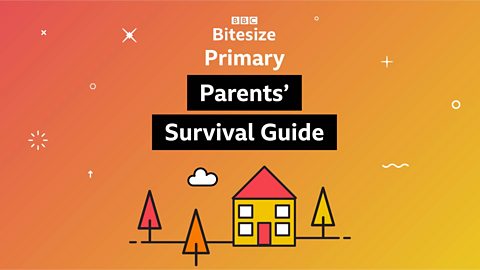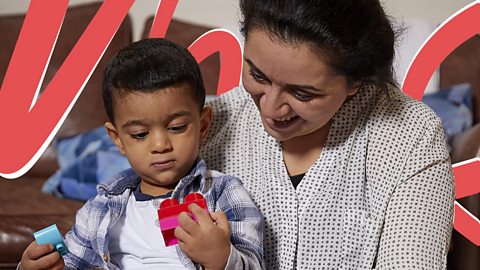
This article was published on 7th July 2020.
Blogger, screenwriter and author Uju Asika shares her tips on starting open conversations about race and how to be active, inspiring and empowering.
Picture this: you’re sitting on a bus when a man walks on wearing a traditional Sikh turban. Your child stares and points.
"Mummy, why’s that man wearing a funny hat? And why is his face so brown?"
You are mortified. Your first instinct might be to hush your child and offer an apologetic smile. But is that the right response?
Small children are masters of the awkward question. As a parent, you might want to avoid saying the wrong thing, so you don’t say anything at all. However, ignoring your child or trying to silence them won’t teach them anything useful or stop them asking even more difficult questions later on.

Keep calm and be KIND
The best way to handle awkward questions is calmly and factually. Try the KIND approach:
- Be kind
- Use inclusive language
- Stick to what they need to know – according to their age and the context
- Be as direct as possible – keep your answer short, simple and truthful
You could say something like: "Yes, that man is brown. Isn’t it wonderful how we are all different colours?" or "He is wearing a turban because his hair is important and he wants to keep it safe, so he stands out and can be proud. Doesn’t it look smart?".
If you are totally caught off guard, remember to take a breath and smile before you try to answer. Your child will respond not only to the words you use but how you react to their question. When you shush a child or clam up yourself, they get the impression that there’s something wrong with mentioning race. Maybe even that there’s something wrong with racial difference. The last thing you want to do is shame your child for their curiosity.
Depending on the situation, you could simply say: "That’s a really good question. Shall we talk about it more when we get home?".
Use these moments as a learning opportunity.
Some conversations might be too much for a public setting, so take the time to discuss further in private.

What age do children understand race?
You might be tempted to put off talking about race until your child is much older. Maybe you think they’re too little or you don’t want to put ideas in their head.
But the truth is that even very young kids are picking up messages about race and ethnicity every single day, from all around us.
After all, race can affect everything from where people live to who works certain jobs, or who appears more regularly in books, movies and TV shows.
Studies reveal that by age 2, children start sorting themselves into groups showing what is known as in-group bias. In other words, kids in the playground might choose to play with children who are more like them, while excluding others.
According to research, even babies at 3 months old can tell different races apart. However, young babies don’t attach any specific emotion or value judgement to race. That happens over time, based on what we learn from our environment. So as a parent, you should be proactive about tackling negative mindsets from early on.
How to start a conversation about race with children
How do you approach such a big topic with someone who’s still not using complete sentences?
Start small. Don’t begin a lecture on hate groups like the Ku Klux Klan when your audience is a 3-year-old. You want to educate them, not give them nightmares.
Start with what’s familiar. You could talk about your own ethnic background and how all our ancestors came from different parts of the world, which is why there’s such variety in how we look, dress or speak.
Remember to use kind, positive and inclusive language when describing racial or cultural heritage.
Talk about how people can look different even in the same family – for instance, one sibling has red hair and freckles, while another has olive skin and dark hair. Also be sure to compare similarities as well as differences. Like, how amazing it is that no two people on the planet are exactly the same and yet we have so much in common.
Be specific
Don’t shy away from using terms like black or white to describe skin tone. Younger kids might find it strange since nobody’s skin is pure black or white. But it’s important for a child to understand that being white or Black or brown is not just about the colour of your skin but your experience as a member of society.
You could talk about how being white might give you certain advantages – for instance, you are more likely to see people who look like you on TV. However, white people can choose to use their advantages to help make a fairer world for all.
These are big topics, so don’t try to cram in everything at once. Talking about race is similar to talking about the birds and the bees. You can’t rely on one conversation. The trick is to take it at your child’s pace and keep checking in as they grow older.
Tell the truth
For parents of colour, talking about race can trigger difficult emotions. Take some private time to deal with any negative feelings before you have a conversation with your child. However, if you become emotional while talking with your child, it’s not the end of the world. It can be helpful for kids to see grown-ups as real people with real emotions too.
Also don’t avoid telling your child about racism because it’s scary. We all want to keep our babies safe and often the best way to keep them safe is by telling them the truth. Racism, global warming, road accidents – these are all part of human experience.
If your child is very little, keep it simple. Bad things happen and there are bad people too. However, there are many ways to get help or take a stand against racism.
Empower your child to see themselves as someone who can make a difference, no matter how little they are.
Show them how to use their big voice to speak out when someone says or does something unkind.
Teach your child how to say a firm ‘stop’ or ‘no’ or ‘I don’t like that’ when somebody’s behaviour crosses the line. Give them simple phrases to use like 'That's not fair', 'That's not true', 'That's not kind'. For slightly older kids, you can role play situations to help them figure out when it’s right to intervene and when the best response is simply to walk away.
Be the change you want to see
Remember, kids don’t just follow what you say but what you do. So if you want them to be kinder, fairer and more inclusive, be sure to model that in your own life.
For white mums or dads, it might be time to examine your own internal biases. Did your family express negative thoughts about foreigners and immigrants? What is your social circle like today? Does your child have Black or brown friends over for playdates? Could you be doing more?
Think about ways you can educate yourself and broaden your family’s horizons, for instance through books and TV shows.
Stories are especially powerful because they allow a child to see through another person’s eyes.
Look for stories that talk positively about skin colour and identity. But also look for stories about everyday boys and girls who just happen to have different backgrounds and skin colours.
Talking about race shouldn’t always focus on what makes us different but what makes us unique, what makes us happy, what makes us human. Stuff that any child can relate to.
Uju's selection of helpful resources
TV
- JoJo and Gran Gran
- Sesame Street
- Doc McStuffins
- Bino and Fino
Books
- Everywhere Babies by Susan Meyers
- I Am Brown by Ashok Banker
- Mixed: A Colourful Story by Arree Chung
- Sulwe by Lupita Nyong’o
- Julian is a Mermaid by Jessica Love
- Knights Of publishes a wide range of inclusive books
Websites
Uju runs the blog and you can follow her @babesabouttown on Twitter, Instagram and Facebook.






